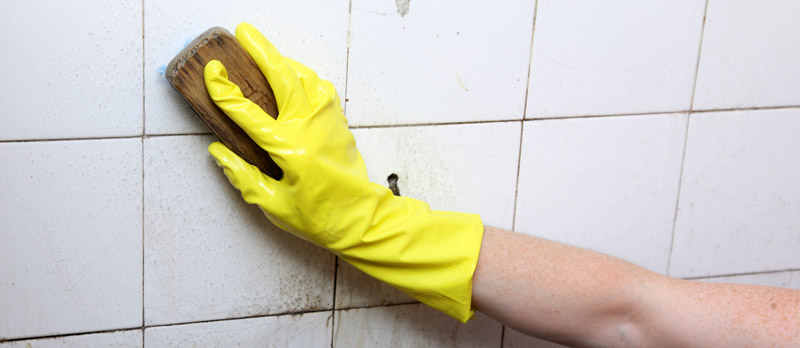10 easy steps to create a healthy space
1. Take off your shoes.
Removing shoes at the front door can reduce up to 50% of the dust bought into the home. By placing a shoe rack outside the front door, and another inside the front door, allows shoes to be removed and easily stored. I am aware that not everyone likes to remove their shoes, so ensuring a heavy duty doormat made from material such as coir, is placed at the front door, then there are no excuses for you or your guests not to wipe their feet.
2. Invest in a good vacuum cleaner.
Poorly cleaned carpets have been linked with irritation of the eyes, airways and skin, as well as headaches and fatigue. An efficient vacuum cleaner is therefore an investment not to scrimp on. Choosing a brand that has a true HEPA filter, will reduce the exposure to allergens like mould, house dust mites and dander. A HEPA filter ensures these harmful particles do not become airborne by trapping them inside the vacuum cleaner.
Dust particles carry bacteria, viruses and mould, hence the importance of minimizing the dust in the house. A Vacuum cleaner with a motorized head is essential especially if you have pets or family with allergies. Beware that many vacuum cleaners claim to have filters, that are ‘like a HEPA filter’, but are not a true HEPA filter, and there is a huge difference in the capability of trapping the ultrafine dust particles.
Filters that can be washed and reused are great to keep the vacuum cleaner functioning effectively. Avoid cleaners with dust bags, these suck up the dirt and dust at one end, and exhaust at the other end, which releases billions of microscopic particles that can float for hours before settling again, waiting to be inhaled.

3. Open some windows!
A Healthy Home needs fresh air, so open windows and doors as often as you can. A healthy home smells of clean air. It is important to have fly screens fitted on windows and security screens on doors for safety, so you can open doors and windows and know your home is safe from intruders and insects. Modern homes are designed and built to save energy. This means that buildings are insulated and wrapped so tightly no air escapes, which is not healthy for the occupants, as it is essential to have an adequate oxygen/carbon dioxide exchange.
4. Air out bedding
Further to airing out the home, regular airing of pillows, doonas, blankets, and underlays will ensure a healthier environment in which to sleep. Dust mites will not survive the sunshine and fresh air. Pillows should be replaced every 2 years, and mattresses every 10 years.
5. Eliminate Dust
The way in which we clean our home is a major factor in creating a healthy home. Eliminating dust is our target, so wet dusting with a damp cloth rather than dry dusting, removes the dust in your home, rather than just circulating it back into the air. Investing in quality microfiber cloths makes this job easier. Avoid sweeping your floors, use a microfiber broom/mop that catches the dust, or vacuum your hard surfaces.

6. Invest in a good water filter.
Water is essential for our survival; a person can only survive three to five days without water. Many Australians brag about “how good the water quality is” and the catchments around Melbourne are miles away from the city in protected forest catchments areas, where no one can access them. Sounds good right?
So what’s the problem? Well, we don’t actually drink this water, we drink water that has been treated to ‘purify and protect’ it, from the hundreds of kilometers of pipes through which it must travel to your home. Some of the chemicals used to ‘purify’ our water include:
- Flouride: a toxic substance, that is not essential for healthy living. It can inhibit calcium absorption leading to brittle bones, and as it is used as a medication, there is no monitoring of the dosage or the side effects. Applying fluoride directly to the teeth does strengthen them, but the toothpaste should not be swallowed.
Recent research has proven that drinking fluoridated water does not prevent tooth decay, which is the reason that fluoride was first introduced back in the 1970’s.
Water filters can reduce or remove fluoride, depending on the filtration system. - Chlorine: used to purify our water, which is essential, however many people find chlorine to be a skin and airway irritant. This can be prevented by using a water filter for drinking water, and a shower filter in the bathroom.
- Pesticides: are chemicals used to control plants and animal pests and may be used in and around the home. There are many types of pesticides including insecticides and herbicides. The use of DDT has been linked with cancer.
- Copper: can cause digestive problems, liver and kidney damage, and increase the risk of miscarriage.
- Discolouration of water may indicate the presence of iron.
The health concerns associated with water will depend upon the source of drinking water, whether tap, tank, bore or bottled. Building Biologists can test your tap water for up to 10 different contaminants.
I would recommend a water filter system for most households. No one water filter suits all homes, so each house needs to be individuality assessed.

7. Reduce Chemical Exposure
Be mindful of the chemicals that are bought into the home. Media advertising would have us believe that we need chemicals to disinfect our homes and have them smell nice, this is just not true. Many of these products contain harmful toxic ingredients, which can cause any number of health issues. Plug in air fresheners and sprays should be avoided as they send a steady stream of toxic chemicals into the air. Try using essential oils such as lavender or lemongrass for a pleasant aroma, essential oils also have added health effects for the body and mind – plug in air fresheners do not. Do not use essential oils if anyone in the household suffers from multiple chemical sensitivities.
Take stock today and open your cupboards – take a look at what’s in there and investigate healthy alternatives. There are many environmentally friendly brands around, be sure to check the label though. Try cleaning with vinegar, baking soda and eucalyptus oil. Your home will be clean and fresh and so will you!

8. Naturally reduce mould
Mould is a problem in many homes, it can only survive where there is moisture, so eliminate any leaks and dry wet areas such as the bath or shower after use. If mould does appear, then vinegar is the best remedy to kill it. Many households rely on bleach to remove the mould, however, this only makes the mould invisible so we can’t see it, and within a few weeks it is back – and twice the size. Bleach actually feeds mould. Bleach is also known as sodium hydroxide and sodium hypochlorite, it may contain fragrance, lauryl dimethyl and amine oxide.
Bleach is an irritant to eyes and skin, and it can release a toxic gas, so personal protective gear such as gloves, glasses and facemask should be worn when using it. There is a 15 minute exposure limit in one day when working with it, however within a residential home, we are not protected by occupational health and safety rules.

9. Get some plants.
Indoor plants not only look great, but they release oxygen and absorb harmful carbon dioxide and other toxins from our living spaces. Plants reduce airborne moulds and bacteria, reduce chemical emissions and balance humidity levels. Plants such as peace lilies, boston ferns and spider plants are readily available to purchase. NASA Space Centre has been studying the benefits of house plants for over 20 years. Plants help to control humidity levels via an amphoteric action. Contaminants such as acetone, ammonia, benzene and formaldehyde can be removed or reduced by certain plants.

10. Improve your sleeping environment
To ensure a good nights sleep, and enable the body to rest and repair, I recommend removing all electrical appliances from the bedroom, to reduce electro magnetic fields. Turning off all WIFI devices in the house and switching your phone onto airplane mode, eliminates any radio frequencies from disturbing sleep patterns.
Do you have any additional tips?
Let me know your thoughts in the comments!


